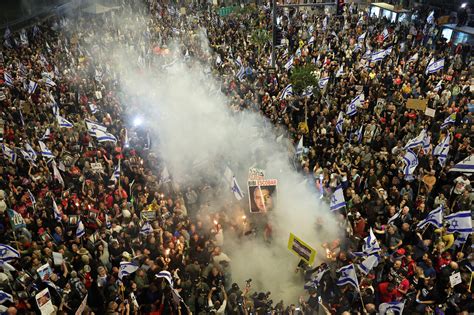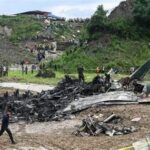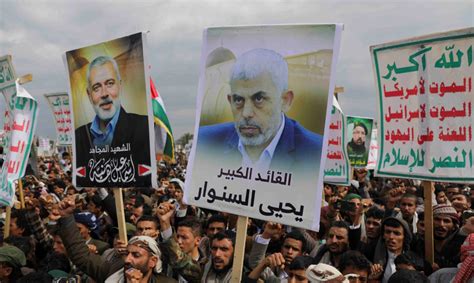
Israel launched a large-scale offensive following a Hamas attack that included alleged beheadings, according to Israeli officials, marking a significant escalation in the ongoing conflict. The multi-pronged assault has resulted in numerous casualties on both sides and raised fears of a protracted and devastating war.
Israel Launches Offensive After Hamas Attack, Alleging Atrocities
Israel has initiated a widespread military operation in response to a surprise attack by Hamas, the Palestinian militant group controlling Gaza, which Israeli officials say included the decapitation of civilians. The assault, characterized as a “three-pronged” offensive, involves air, ground, and sea components and aims to dismantle Hamas’s capabilities and infrastructure within the Gaza Strip. The unprecedented attack by Hamas, which began early Saturday, saw militants breaching the border fence and infiltrating Israeli territory, resulting in a reported heavy loss of life and the capture of numerous hostages.
The Israeli government has vowed a harsh response, with Prime Minister Benjamin Netanyahu declaring that Israel is “at war” and promising to exact a “massive price” from Hamas. The Israel Defense Forces (IDF) have mobilized reserves and are conducting extensive airstrikes targeting Hamas positions, infrastructure, and command centers in Gaza. Ground troops have also entered the territory, engaging in fierce fighting with Hamas militants.
The attack by Hamas has been described as the most serious escalation in the Israeli-Palestinian conflict in decades. The sheer scale and audacity of the operation, coupled with the reported atrocities, have shocked Israel and the international community. The conflict is unfolding against a backdrop of already heightened tensions in the region and threatens to further destabilize the situation.
Hamas Attack Details and Israeli Response
The Hamas operation, dubbed “Operation Al-Aqsa Flood,” involved a coordinated assault that began with a massive rocket barrage targeting Israeli cities and towns. Simultaneously, Hamas militants breached the border fence at multiple points, infiltrating Israeli territory using vehicles, motorcycles, and even paragliders. The militants targeted civilian communities and military installations, reportedly killing and abducting numerous Israelis.
Israeli officials have accused Hamas of committing heinous crimes during the attack, including the decapitation of civilians, including children. “It’s impossible to understand such a thing. It’s beyond barbaric,” said an IDF spokesperson. While these claims are yet to be independently verified, they have fueled outrage in Israel and strengthened the resolve to retaliate against Hamas.
In response to the Hamas attack, the IDF launched “Operation Swords of Iron,” a large-scale military operation aimed at dismantling Hamas’s capabilities and restoring security to Israeli citizens. The operation involves:
- Airstrikes: The Israeli Air Force (IAF) has been conducting intensive airstrikes targeting Hamas positions, infrastructure, and command centers throughout the Gaza Strip. The strikes have targeted rocket launchers, weapons depots, training facilities, and residential buildings allegedly used by Hamas militants.
- Ground Operations: IDF ground troops have entered the Gaza Strip, engaging in fierce fighting with Hamas militants. The ground operations aim to clear Hamas fighters from the border area, destroy their infrastructure, and prevent further attacks.
- Naval Blockade: The Israeli Navy has imposed a naval blockade on the Gaza Strip, preventing the entry of weapons and supplies that could be used by Hamas.
The IDF has warned civilians in Gaza to evacuate their homes, as the military operation is expected to intensify in the coming days. However, the evacuation has been hampered by the ongoing fighting and the limited access to safe areas.
Humanitarian Crisis in Gaza
The ongoing conflict has created a dire humanitarian situation in the Gaza Strip, a densely populated territory already suffering from poverty, unemployment, and limited access to essential services. The Israeli airstrikes and ground operations have caused widespread destruction, damaging homes, hospitals, schools, and other civilian infrastructure.
The United Nations and other international organizations have expressed grave concern over the humanitarian situation in Gaza and have called for an immediate cessation of hostilities to allow for the delivery of humanitarian aid. However, the fighting continues to rage, and the humanitarian situation is deteriorating rapidly.
The closure of border crossings has further restricted the movement of people and goods, exacerbating the already existing shortages of food, water, medicine, and fuel. Hospitals are struggling to cope with the influx of casualties, and the lack of medical supplies is hampering their ability to provide adequate care.
International Reactions and Diplomatic Efforts
The Hamas attack and the Israeli response have drawn strong reactions from the international community. Many countries have condemned the Hamas attack and expressed their support for Israel’s right to defend itself. However, there have also been calls for restraint and de-escalation, with concerns raised about the disproportionate use of force and the impact on civilians in Gaza.
The United States has expressed its unwavering support for Israel and has pledged to provide security assistance to help Israel defend itself. President Joe Biden has spoken with Prime Minister Netanyahu and has reaffirmed the U.S. commitment to Israel’s security. The U.S. has also dispatched additional military assets to the region to deter further escalation.
Other countries, including European nations and Arab states, have called for a ceasefire and a return to negotiations. Egypt and Qatar are reportedly mediating between Israel and Hamas in an effort to reach a truce. However, the prospects for a ceasefire remain uncertain, as both sides appear determined to continue fighting.
Possible Scenarios and Implications
The ongoing conflict could have far-reaching consequences for the region and beyond. Several possible scenarios could unfold:
- Prolonged Conflict: The fighting could continue for weeks or even months, resulting in further casualties and destruction. A prolonged conflict could also lead to the involvement of other actors in the region, such as Hezbollah in Lebanon, further escalating the situation.
- Full-Scale Invasion of Gaza: Israel could launch a full-scale invasion of the Gaza Strip, aiming to dismantle Hamas’s infrastructure and remove the group from power. A full-scale invasion would likely result in heavy casualties on both sides and a humanitarian catastrophe in Gaza.
- Ceasefire and Negotiations: A ceasefire could be reached through international mediation, leading to negotiations between Israel and Hamas. However, the prospects for a lasting peace agreement remain slim, given the deep-seated mistrust and the unresolved issues between the two sides.
The conflict is unfolding against a backdrop of already heightened tensions in the region, including the ongoing Syrian civil war, the political crisis in Lebanon, and the rivalry between Saudi Arabia and Iran. The conflict could further destabilize the region and exacerbate existing tensions. The humanitarian crisis in Gaza could also have long-term consequences, further radicalizing the population and fueling resentment towards Israel.
Analysis of the Conflict Dynamics
The current conflict is rooted in the long-standing Israeli-Palestinian conflict, which has been ongoing for decades. The conflict is driven by a complex mix of political, religious, and historical factors, including competing claims to land, disputes over borders, and the status of Jerusalem.
Hamas, which has controlled Gaza since 2007, is committed to the destruction of Israel and has repeatedly launched attacks against Israeli civilians. Israel, in turn, has imposed a blockade on Gaza, restricting the movement of people and goods, and has conducted numerous military operations in the territory.
The current conflict is different from previous rounds of fighting in several respects. First, the Hamas attack was unprecedented in its scale and audacity. Second, the Israeli response has been particularly harsh, reflecting the government’s determination to dismantle Hamas’s capabilities. Third, the humanitarian situation in Gaza is particularly dire, raising concerns about a potential humanitarian catastrophe.
The conflict highlights the need for a comprehensive and lasting solution to the Israeli-Palestinian conflict. However, the prospects for a solution remain elusive, given the deep-seated mistrust and the unresolved issues between the two sides.
The Allegations of Beheadings
The allegations of beheadings by Hamas militants have added a particularly gruesome dimension to the conflict. These claims, made by Israeli officials and amplified by media outlets, have sparked outrage and condemnation around the world. However, it’s crucial to approach these allegations with caution and to await independent verification.
While the full extent of Hamas’s atrocities remains under investigation, there is no doubt that the group has committed serious human rights violations, including the deliberate targeting of civilians and the taking of hostages. These actions violate international law and constitute war crimes.
The Israeli response to the Hamas attack must also be conducted in accordance with international law, with every effort made to protect civilians and to avoid disproportionate use of force. The targeting of civilian infrastructure and the imposition of a blockade that restricts access to essential goods are also violations of international law.
Long-Term Implications for Regional Stability
The current conflict has the potential to reshape the political landscape of the Middle East. A prolonged conflict could further destabilize the region, exacerbating existing tensions and potentially drawing in other actors.
The conflict could also have implications for the ongoing efforts to normalize relations between Israel and Arab states. The Abraham Accords, which were signed in 2020, have led to the establishment of diplomatic relations between Israel and several Arab countries. However, the current conflict could undermine these efforts and make it more difficult for other Arab states to normalize relations with Israel.
The conflict also highlights the need for a renewed focus on resolving the Israeli-Palestinian conflict. A lasting peace agreement is essential for ensuring long-term stability in the region. However, the prospects for a solution remain elusive, given the deep-seated mistrust and the unresolved issues between the two sides.
Broader Geopolitical Context
The Israeli-Palestinian conflict is not occurring in a vacuum. It is deeply intertwined with broader geopolitical dynamics in the Middle East and beyond. The conflict is influenced by regional rivalries, such as the competition between Saudi Arabia and Iran, as well as by the involvement of external powers, such as the United States, Russia, and China.
The United States has long been a strong supporter of Israel and has played a key role in mediating between Israel and the Palestinians. However, the U.S. role in the conflict has been criticized by some, who argue that the U.S. is too biased in favor of Israel.
Russia has also been involved in the conflict, maintaining ties with both Israel and the Palestinians. Russia has sought to play a mediating role in the conflict, but its efforts have been hampered by its close relationship with Syria and Iran.
China has also been increasing its involvement in the Middle East, seeking to expand its economic and political influence in the region. China has called for a peaceful resolution to the Israeli-Palestinian conflict, but its approach has been largely focused on economic development and investment.
The Role of Social Media and Misinformation
Social media has played a significant role in the current conflict, both in disseminating information and in spreading misinformation. Social media platforms have been used by both sides to share their perspectives on the conflict, to rally support for their cause, and to document the events on the ground.
However, social media has also been used to spread misinformation, disinformation, and propaganda. False and misleading reports have been widely shared, fueling tensions and exacerbating the conflict. The spread of misinformation has made it more difficult to understand the true nature of the conflict and to identify solutions.
Social media companies have a responsibility to combat the spread of misinformation on their platforms. They should take steps to identify and remove false and misleading content, and they should work to promote accurate and reliable information.
The Need for a Comprehensive Approach
The Israeli-Palestinian conflict is a complex and multifaceted problem that requires a comprehensive approach. There is no simple solution to the conflict, and any attempt to resolve it must address the underlying political, economic, and social factors.
A comprehensive approach should include:
- Negotiations: Direct negotiations between Israel and the Palestinians are essential for reaching a lasting peace agreement. The negotiations should address the key issues in dispute, including borders, security, Jerusalem, and refugees.
- Economic Development: Economic development is essential for improving the living conditions of Palestinians and for creating a more stable and prosperous society. International assistance should be provided to support economic development in the West Bank and Gaza.
- Security Cooperation: Security cooperation between Israel and the Palestinians is essential for preventing violence and for building trust. The two sides should work together to combat terrorism and to maintain security along the border.
- International Support: International support is essential for promoting peace and stability in the region. The international community should provide financial and political support for the peace process and should work to create a more favorable environment for negotiations.
The current conflict is a stark reminder of the urgent need for a comprehensive and lasting solution to the Israeli-Palestinian conflict. The international community must work together to create a more peaceful and just future for both Israelis and Palestinians.
Frequently Asked Questions (FAQ)
-
What triggered the current conflict between Israel and Hamas?
- The conflict was triggered by a surprise attack by Hamas, involving a massive rocket barrage and the infiltration of militants into Israeli territory. Israeli officials say this attack included atrocities such as the decapitation of civilians.
-
What is Israel’s response to the Hamas attack?
- Israel has launched “Operation Swords of Iron,” a large-scale military operation involving air strikes, ground operations, and a naval blockade of the Gaza Strip. The aim is to dismantle Hamas’s capabilities and restore security to Israeli citizens.
-
What is the humanitarian situation in Gaza?
- The humanitarian situation is dire, with widespread destruction, shortages of essential supplies, and hospitals struggling to cope with casualties. International organizations have expressed grave concern and called for a cessation of hostilities to allow for humanitarian aid.
-
What are the allegations of beheadings and how credible are they?
- Israeli officials have accused Hamas of beheading civilians during the attack. While these claims have fueled outrage, they are unverified. It’s crucial to approach them with caution and await independent confirmation, while recognizing that Hamas has committed other serious human rights violations.
-
What are the possible outcomes of the current conflict?
- Possible outcomes include a prolonged conflict, a full-scale invasion of Gaza by Israel, or a ceasefire and negotiations. The conflict’s resolution is uncertain and could have far-reaching consequences for regional stability.









